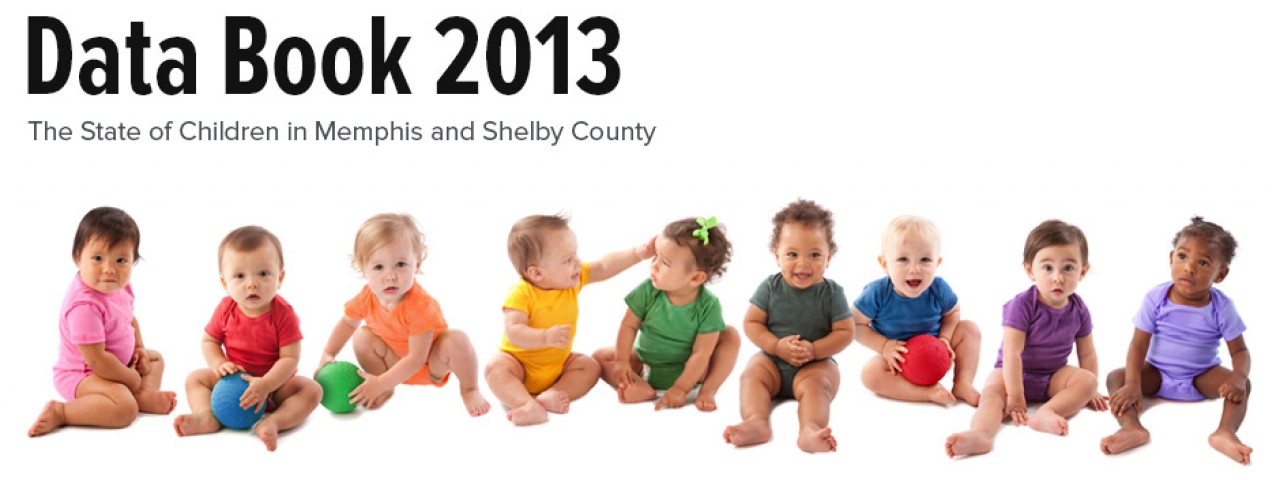Promising Practice
Memphis Child Advocacy Center: helping victims become children again.
Child sexual abuse is widespread in our nation and in Shelby County. It can happen to children from any background and the consequences can be profound and long-lasting. For 20 years, the Memphis Child Advocacy Center has been at the forefront of combating child sexual abuse in Shelby County. The Child Advocacy Center supports safety for children through informed prevention, community collaboration, and a team approach to healing and justice for victims of child sexual and severe physical abuse.
The good news is that in the past 20 years, the number of children being abused is decreasing due to increasing public awareness of child sexual abuse as well as increased offender accountability and treatment.1
Child Advocacy Centers: The frontline of child sexual abuse.
Not long ago, interventions for abused children were inconsistent and often re-victimized abused children and their families. In the 1980s, many professionals who worked with abused children began to call for a new approach.2
The child advocacy center model was created to increase collaboration among agencies, and the first child advocacy center was opened in Huntsville, Alabama in 1985. Multidisciplinary teams typically include forensic interviewers, child advocates, mental health professionals, medical clinicians, and representatives from child protective services, law enforcement, and the criminal justice system.
Child advocacy centers are child-friendly, supportive to non-offending parents and caregivers, and provide services which reduce the number of child interviews needed and improve coordination among professionals.2
Due to the positive results of this new coordinated team approach, child advocacy centers began opening across the country. The coordinated team approach
- decreases processing time for child sexual abuse cases.3,4
- improves felony prosecution rates.5
- increases the likelihood of children receiving forensic medical exams.3,6
- increases the rate of law enforcement involvement in child protection and substantiation of allegations.4,6
Not only does a coordinated investigation increase the ability of communities to hold perpetrators accountable for their actions, it also saves communities money. Return on investment of a multidisciplinary approach is $3.33 for every dollar invested.7 This multidisciplinary approach is now mandatory in many states including Tennessee.2,8
The Memphis Child Advocacy Center is making a difference.
The Memphis Child Advocacy Center was the 14th child advocacy center formed in the United States. At the Memphis Child Advocacy Center (CAC), a full range of services are offered to children and their non-offending families members at no cost. The Center coordinates the local multidisciplinary Child Protection Investigation Team which includes representatives from the Tennessee Department of Children Services, local law enforcement, the District Attorney General’s office, the Shelby County Rape Crisis Center, and Juvenile Court. The team reviews and determines the course of action for all reports of suspected sexual and severe physical abuse in Shelby County.
Typically, children come to the Memphis CAC for a forensic interview. Interviewers at the CAC are specially trained to conduct developmentally appropriate interviews yielding accurate information that can be used during investigation and prosecution. Due to the coordination among agencies, most children are interviewed only once, which spares them the trauma of having to re-tell their stories multiple times.
The Memphis CAC offers victim advocacy and therapy services to children and their non-offending family members. Victim advocates help families understand the legal process and connect families to ancillary support services as needed. Our therapists offer trauma-focused cognitive-behavioral therapy, widely considered the best treatment available for sexually abused children.9 With this high-quality evidence-based treatment, children who come through our doors are able to heal.
The Memphis CAC regularly conducts satisfaction surveys with parents who bring their children to the center. The results indicate high levels of parent satisfaction:
- 79 percent strongly agreed that their child felt safe at the CAC (FIGURE 1).
- 82 percent strongly agreed that they were given information about the services and programs provided by the CAC (FIGURE 2).
- 81 percent strongly agreed that the interview process had been clearly explained to them (FIGURE 3).
- 71 percent strongly agreed that after their experience with the CAC, they understood their child’s situation (FIGURE 4).
FIGUREs 1 through 4 show the high level of parental satisfaction with the Memphis Child Advocacy Center.
FIGURE 1: My child felt safe at the center
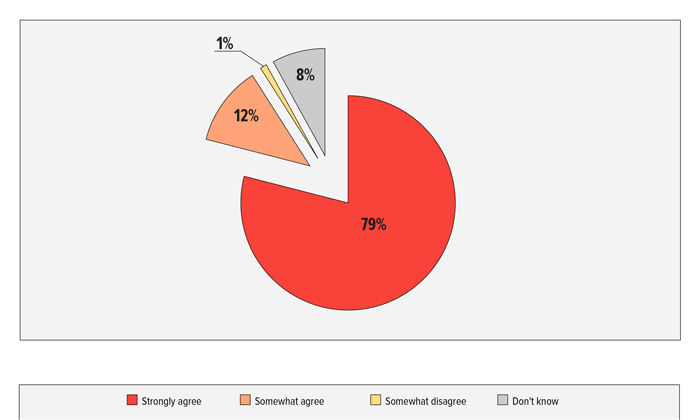
Source: Memphis Child Advocacy Center, Unpublished data, 2012
FIGURE 2: I was given information about the various services and programs provided by the center
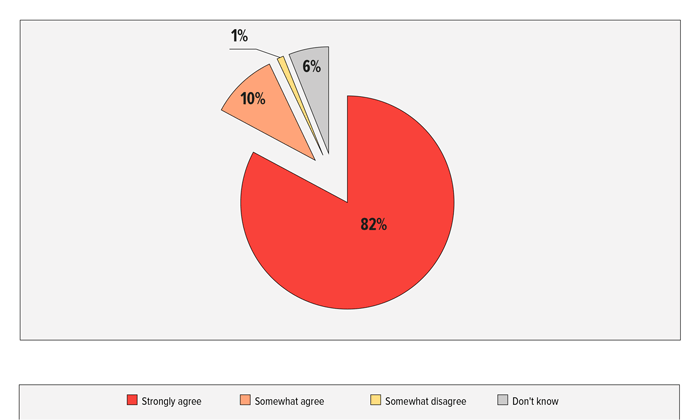
Source: Memphis Child Advocacy Center, Unpublished data, 2012
FIGURE 3: The process for the interview of my child at the center was clearly explained to me
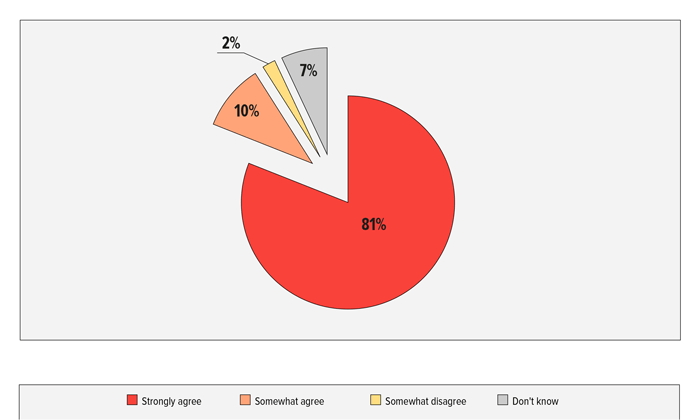
Source: Memphis Child Advocacy Center, Unpublished data, 2012
FIGURE 4: After our visit at the center today, I feel I know what to expect with the situation facing my child
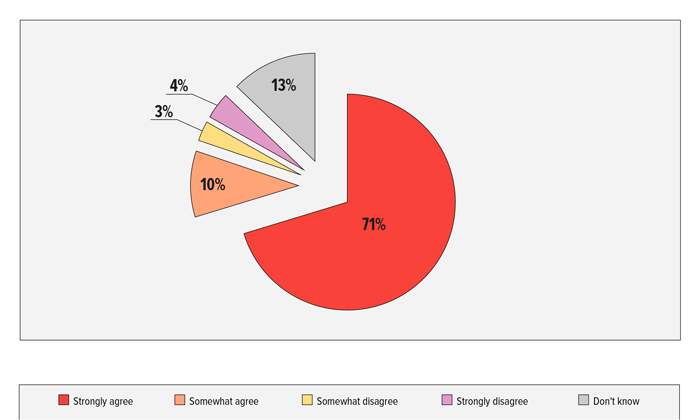
Source: Memphis Child Advocacy Center, Unpublished data, 2012
Effective prevention stops abuse before it occurs.
The Memphis CAC Prevention Team provides abuse prevention training to parents and adults who work with children. During the past decade, the field of child sexual abuse prevention has shifted from a child-focused approach to a public health approach that attempts to stop sexual abuse before it occurs.10 While child-focused approaches have demonstrated effectiveness in increasing children’s knowledge about sexual abuse and actions they can take to protect themselves, the effectiveness of child-focused education on actually preventing abuse is unknown.11,12
Stewards of Children™, the prevention training used by the CAC, teaches adults to prevent, recognize, and react responsibly to child sexual abuse. The curriculum helps adults take an active role in preventing child sexual abuse from happening in the first place. The steps provided in this curriculum encompass an ecological approach to prevention which addresses the individual, relationship, community, and cultural contexts in which abuse occurs.10
We’re making progress.
Nationally, child sexual abuse rates have declined recently.1 Possible explanations include increased public awareness of child sexual abuse as well as increased incarceration, monitoring, and treatment of perpetrators.13,14
Additionally, prevention programs aimed at teaching adults to better protect children – such as Stewards of Children™ – are becoming more prevalent across the country. Stewards of Children™ has been shown to improve adults’ knowledge about child sexual abuse and increase their likelihood of taking specific actions to protect children.15
An independent evaluation of the Memphis CAC Stewards of Children™ training has replicated these findings. An average of 23 percent of adults who complete the training demonstrated gains in knowledge about child sexual abuse. The largest gain in knowledge was in understanding that older youth are perpetrators in two-fifths of child sexual abuse cases. Results showed an 87 percent increase in the proportion of participants who answered this item correctly from pre- to post-test.
Furthermore, the training resulted in more adults taking specific actions to protect children. For example, the proportion of individuals who ensured that one-adult/one-child situations are observable and interruptible increased by 123 percent as measured at the six-month follow-up (FIGURE 5).
The Memphis CAC has committed to training 5 percent of the adult population in Shelby County within the next 5 years.
FIGURE 5: Gains in Prevention Knowledge Among Stewards of Children™ Participant’s at Six-Month Follow-up
FIGURE 5 shows that after the Stewards of Children™ training, participants were more likely to take specific actions to protect children.
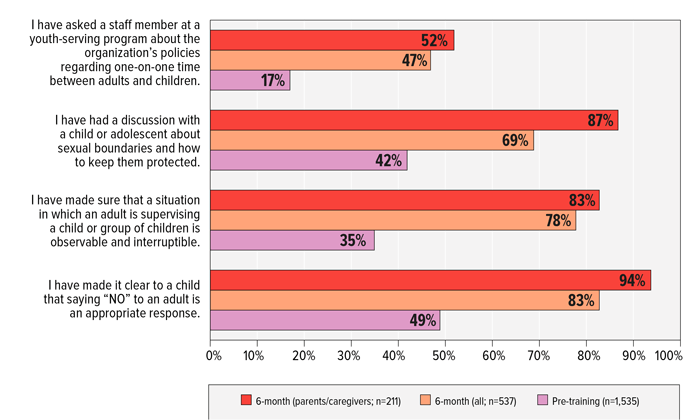
Source: Memphis Child Advocacy Center, Unpublished data, 2013
FIGURE 6: Stewards of Children™ Participants by Work Zip Code, Shelby County, 2012
FIGURE 6 illustrates the numbers of Stewards of Children™ participants from 2012 who work in each zip code.
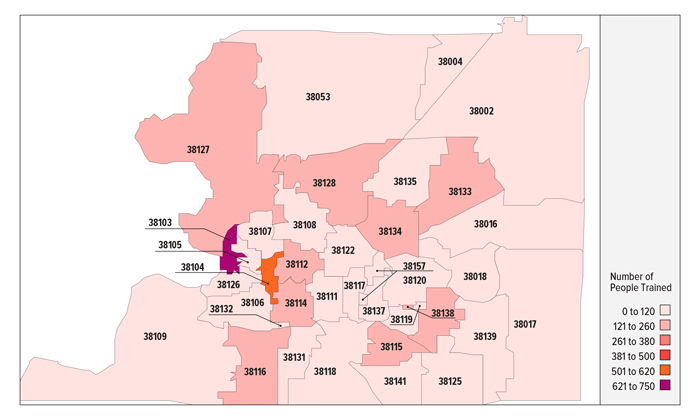
Source: Memphis Child Advocacy Center, Unpublished data, 2013
Since 2010, the Memphis CAC has provided 249 trainings to 6,350 adults, training an average of 318 adults each month. In 2012, the Memphis CAC began collecting home and work zip codes from adults who took the training. FIGURE 6 illustrates the numbers of adults trained who work in each zip code.
In addition to providing Stewards of Children™ prevention training, the Memphis CAC also provides free consultation to youth-serving organizations seeking to strengthen child protection policies. The Memphis CAC has worked with groups including the City of Germantown, the Memphis Grizzlies Mentoring Alliance, and the Girl Scouts Heart of the South.
You can help.
As a community, we must commit to child sexual abuse prevention in order to save our children from living with the life-long pain that child sexual abuse can inflict. Contact the Memphis CAC to bring Stewards of Children™ to your child’s school, sports league, community organization, or faith center–any place where kids spend time.
In addition to learning about the steps you can take to protect children, you can use your voice and your vote to make a difference. Advocate for stronger child-protection policies at youth-serving organizations with which you have contact. Encourage legislators to pass laws that will protect our children and hold offenders accountable.
You can help: Learn how to spot, prevent, and stop child sexual abuse.
- Finkelhor D, Jones L. Have child sexual and physical abuse declined since the 1990s? Crimes Against Children Research Center Bulletin. November, 2012.
- van Eyes P, Beneke B. Navigating the System: The complexities of the multidisciplinary team in cases of child sexual abuse. In P. Goodyear-Brown,ed. Handbook of Child Sexual Abuse: Identification, Assessment, and Treatment. Hoboken, NJ: John Wiley and Sons, Inc., 2012.
- Walsh WA, et al. Which sexual abuse victims receive a forensic medical examination? The impact of Children’s Advocacy Centers. Child Abuse and Neglect. 2007; 31:1053–1068.
- Wolfteich P, Loggins B. Evaluation of the Children's Advocacy Center Model: Efficiency, Legal and Revictimization Outcomes. Child and Adolescent Social Work Journal. 2007; 24(4):333–352.
- Miller A, Rubin D. The contribution of children’s advocacy centers to felony prosecutions of child sexual abuse. Child Abuse and Neglect. 2009; 33:12–18.
- Smith DW, Witte TH, Fricker-Elhai A.E. Service outcomes in physical and sexual abuse cases: A comparison of Child Advocacy Center-based and standard services. Child Maltreatment. 2006; 11(4):354–360.
- Shadoin AL, et al. Cost-Benefit Analysis of Community Responses to Child Maltreatment: A Comparison of Communities with and without Child Advocacy Centers. [Online] [Cited: February 25, 2013.] http://www.nationalcac.org/professionals/images/stories/pdfs/cba-finalreport.pdf.
- Tennessee. Tennessee Code Annotated, 37-1-607 Child protective teams. [Online] [Cited: March 15, 2013.] http://www.state.tn.us/tccy/tnchild/37/37-1-607.htm.
- Saunders B. Determining Best Practice for Treating Sexually Victimized Children. In P. Goodyear-Brown, ed. Handbook of Child Sexual Abuse: Identification, Assessment, and Treatment. Hoboken, NJ: John Wiley and Sons, Inc., 2012.
- Wurtele SK, Kenny MC. Preventing Child Sexual Abuse: A ecological approach. In P. Goodyear-Brown, ed. Handbook of Child Sexual Abuse: Identification, Assessment, and Treatment. Hoboken, NJ: John Wiley and Sons, Inc., 2012.
- Lalor K, McElvaney R. Childhood sexual abuse, links to later exploitation/high risk sexual behaviors, and prevention/treatment programs. Trauma, Violence, and Abuse. 2010; 11(4):157–177.
- Mikton C, Butchart A. Child maltreatment prevention: A systematic review of reviews. Bulletin of the World Health Organization. 2009; 87:353–361.
- Finkelhor D, Jones L. Explanations for the decline in child sexual abuse cases. US Department of Justice, Office of Juvenile Justice and Delinquency Prevention Bulletin. 2004.
- Jones LM, Finkelhor D, Kopiec K. Why is child sexual abuse declining? A survey of state child protection administrators. Child Abuse and Neglect. 2001; 25:1139–1158.
- Derrick CM, Flynn C, Rodi M. Stewards of Children Online: Child sexual abuse prevention training evaluation final report. s.l.: Unpublished, 2007.
